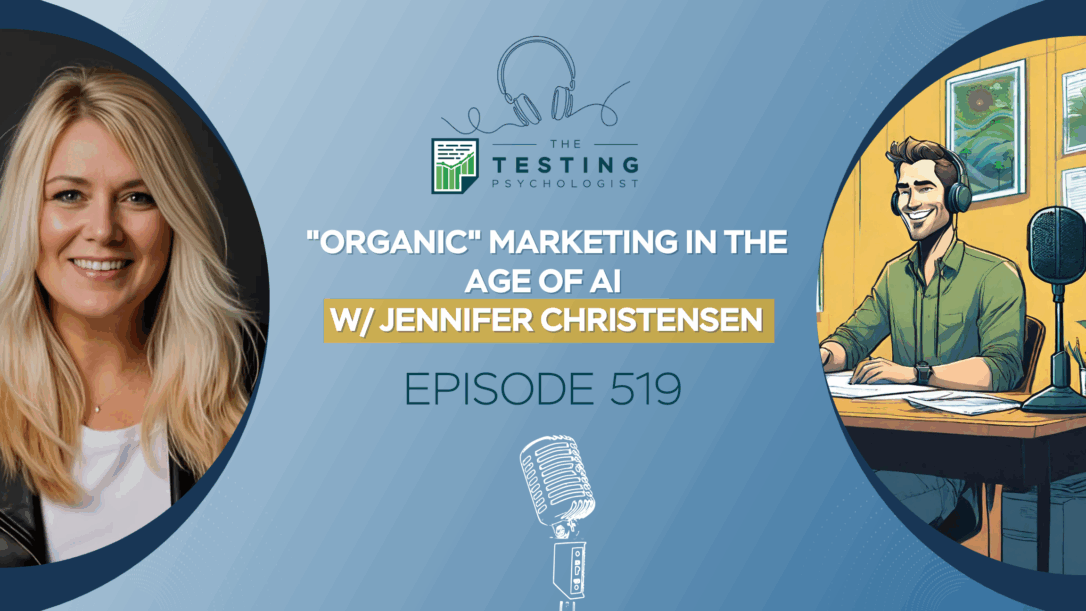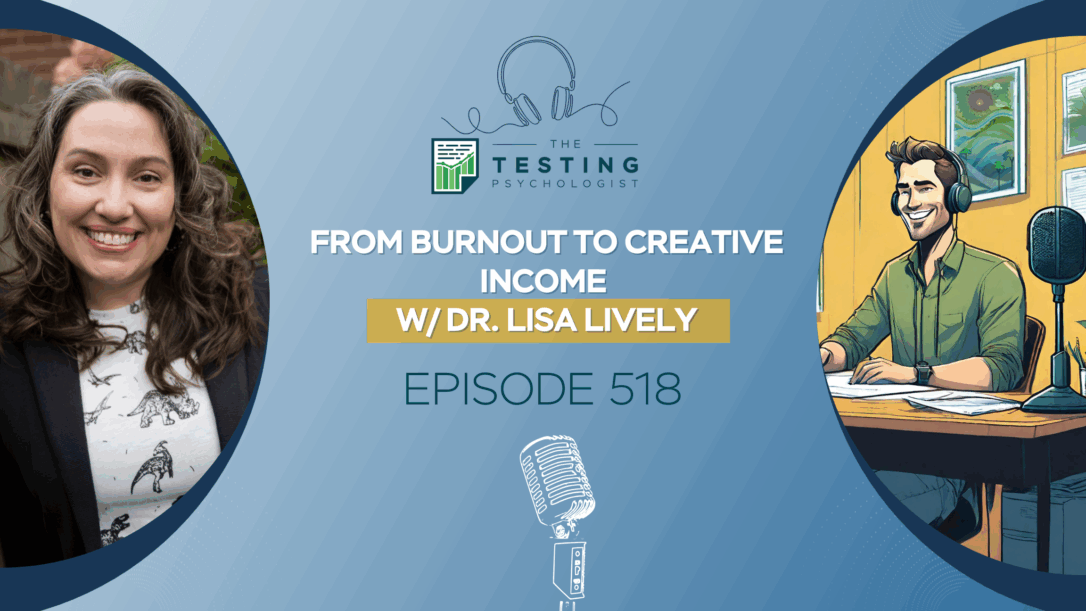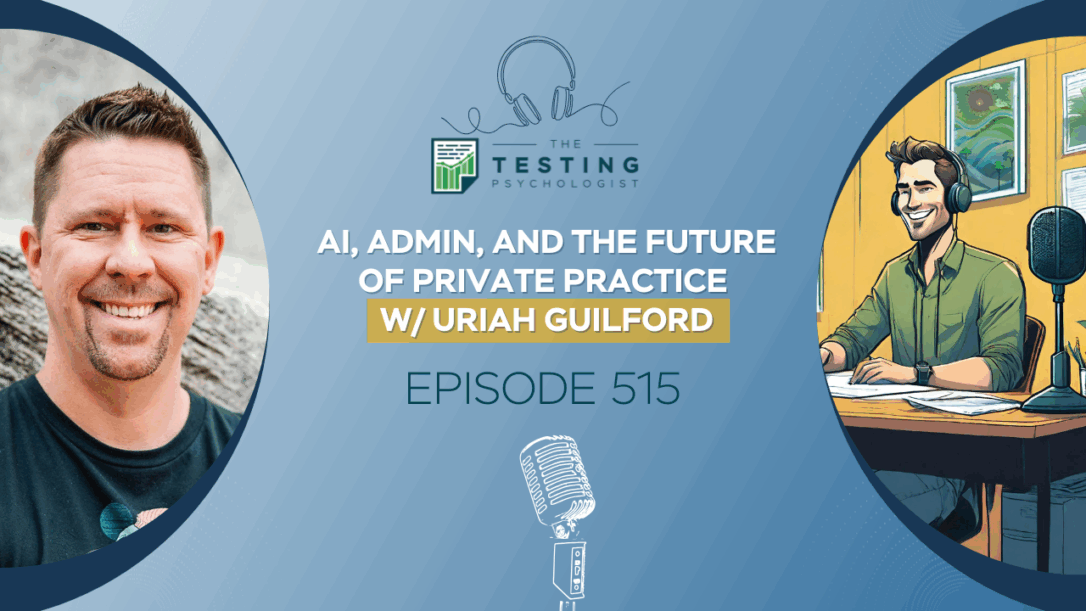Dr. Jeremy Sharp (00:00.568)Hello everyone and welcome to the Testing Psychologist podcast. I’m your host, Dr. Jeremy Sharp, licensed psychologist, group practice owner and private practice coach. Many of y’all know that I have been using TherapyNotes as our practice EHR for over 10 years now. I’ve looked at others and I just keep coming back to TherapyNotes because they …
519. “Organic” Marketing in the Age of AI w/ Jennifer Christensen
In this episode, I sit down with Jennifer Christensen, founder of Beacon Media + Marketing…
519 Transcript
Dr. Jeremy Sharp (00:00.568)Hello everyone and welcome to the Testing Psychologist podcast. I’m your host, Dr. Jeremy Sharp, licensed psychologist, group practice owner and private practice coach. Dr. Jeremy Sharp (00:13.826)Many of y’all know that I have been using TherapyNotes as our practice EHR for over 10 years now. I’ve looked at others and I just keep coming back to …
518 Transcript
Dr. Jeremy Sharp (00:00.568)Hello everyone and welcome to the Testing Psychologist podcast. I’m your host, Dr. Jeremy Sharp, licensed psychologist, group practice owner and private practice coach. Dr. Jeremy Sharp (00:13.772)Many of y’all know that I have been using TherapyNotes as our practice EHR for over 10 years now. I’ve looked at others and I just keep coming back to …
517 Transcript
Dr. Jeremy Sharp (00:00.568)Hello everyone and welcome to the testing psychologist podcast. I’m your host, Dr. Jeremy Sharpe, psychologist, disowner, and private practice coach. Dr. Jeremy Sharp (00:12.066)Many of y’all know that I have been using therapy notes as our practice EHR for over 10 years now. I’ve looked at others and I just keep coming back to therapy notes …
516 Transcript
Dr. Jeremy Sharp (00:00.568)Hello everyone and welcome to the Testing Psychologist podcast. I’m your host, Dr. Jeremy Sharp, licensed psychologist, group practice owner and private practice coach. This episode is brought to you by PAR. Psychologists need assessment tools for a more diverse population these days. PAR is helping by making many of their Spanish print forms available online through …
518. From Burnout to Creative Income w/ Dr. Lisa Lively
In this conversation, I reconnect with my longtime colleague and friend, Dr. Lisa Lively, to explore how she turned her personal burnout into a creative side hustle…
517. Licensure, Logistics, and Life Abroad w/ Dr. Hilary Anand
Hey everyone, today’s conversation is packed with practical tips and hard-earned wisdom for any psychologist who’s ever dreamed of living and practicing abroad.
516. What I Learned From Accidentally Taking Two Months Off
In this short solo episode, I reflect on the accidental two-month hiatus from the podcast and the business lessons that came out of it.
515. AI, Admin, and the Future of Private Practice w/ Uriah Guilford
I’m back with my friend and repeat guest Uriah Guilford of Productive Therapist to dive deep into the world of AI and its growing role in private practice.





